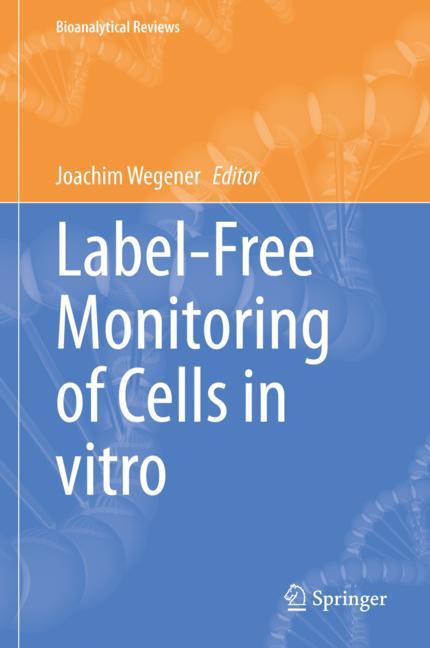Label-Free Monitoring of Cells in vitro 2019
دانلود کتاب پزشکی نظارت بر سلول های بدون برچسب در شرایط آزمایشگاهی
| نویسنده |
Joachim Wegener |
|---|
| تعداد صفحهها |
277 |
|---|---|
| نوع فایل |
|
| حجم |
11 Mb |
| سال انتشار |
2019 |
89,000 تومان
این کتاب برای نظارت بدون برچسب و غیرتهاجمی سنجشهای مبتنی بر سلول است و شامل گستردهترین تکنیکهای کاربردی است. هر رویکرد توسط یک متخصص در این زمینه توصیف و ارزیابی انتقادی می شود تا محققان یک دید کلی از آنچه ممکن است و محدودیت ها در کجا هستند را بدست آورند. این کتاب مبنای نظری هر فناوری و همچنین موفق ترین و هیجان انگیزترین کاربردها را ارائه می دهد.
تکنیکهای زیست تحلیلی بدون برچسب مدتهاست که بهعنوان ابزار ارزشمندی برای نظارت بر فرآیندهای جذب در سطح مشترک مایع-جامد به طور کلی – و تجزیه و تحلیل برهمکنش بیومولکولی (BIA) به طور خاص شناخته شدهاند. مفاهیم اساسی به تدریج به تجزیه و تحلیل سنجش های مبتنی بر سلول منتقل شد. قدرت این روش ها به طور ضمنی به عنوان “بدون برچسب” داده می شود: خواندن مستقل از هر برچسب، معرف یا افزودنی است که سیستم مورد مطالعه را آلوده کرده و احتمالاً بر خواص آن تأثیر می گذارد. بنابراین، تکنیکهای بدون برچسب یک دیدگاه تحلیلی بیطرفانه ارائه میدهند به این معنا که نمونه توسط مواد افزودنی دستکاری نمیشود، بلکه خالص است. آنها به طور کلی بر اساس اصول فیزیکی هستند و تغییرات در خواص فیزیکی یکپارچه نمونه مانند ضریب شکست، هدایت، ظرفیت یا مدول الاستیسیته را میخوانند. اگرچه در نام ذکر نشده است، روشهای بدون برچسب معمولاً سلولهای مورد مطالعه را به شیوهای غیر تهاجمی نظارت میکنند، به این معنی که دامنه سیگنال (مثلاً قدرت میدان الکتریکی، افزایش طول مکانیکی) مورد استفاده برای اندازهگیری بسیار کم است و نمیتوان آن را تحت تأثیر قرار داد یا تحت تأثیر قرار داد. . برخلاف تکنیکهای تحلیلی مبتنی بر برچسب که معمولاً به یک خواندن در یک نقطه زمانی از پیش تعیینشده محدود میشوند، روشهای بدون برچسب امکان نظارت مداوم را تا زمانی که پویایی یک سیستم بیولوژیکی یا تعامل در دسترس قرار میگیرد، میدهد.
This book is dedicated to label-free, non-invasive monitoring of cell-based assays and it comprises the most widely applied techniques. Each approach is described and critically evaluated by an expert in the field such that researchers get an overview on what is possible and where the limitations are. The book provides the theoretical basis for each technique as well as the most successful and exciting applications.
Label-free bioanalytical techniques have been known for a long time as valuable tools to monitor adsorption processes at the solid-liquid interface in general – and biomolecular interaction analysis (BIA) in particular. The underlying concepts have been progressively transferred to the analysis of cell-based assays. The strength of these approaches is implicitly given with the name 'label-free': the readout is independent of any label, reagent or additive that contaminates the system under study and potentially affects its properties. Thus, label-free techniques provide an unbiased analytical perspective in the sense that the sample is not manipulated by additives but pure. They are commonly based on physical principles and read changes in integral physical properties of the sample like refractive index, conductivity, capacitance or elastic modulus to mention just a few. Even though it is not implied in the name, label-free approaches usually monitor the cells under study non-invasively meaning that the amplitude of the signal (e.g. electric field strength, mechanical elongation) that is used for the measurement is too low to interfere or affect. In contrast to label-based analytical techniques that are commonly restricted to a single reading at a predefined time point, label-free approaches allow for a continuous observation so that the dynamics of the biological system or reaction become accessible.




